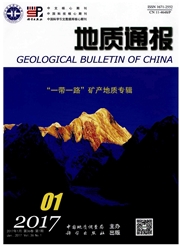

 中文摘要:
中文摘要:
广泛使用的数字高程模型(DEM)数据使得古沉积面的恢复成为可能。以青藏高原东北缘的青海贵德盆地为例,分析对比了前人获取代表古沉积面地表露头样本数据的几种方法.提出了插值样本应选择露头中代表原始沉积地层的顶面点的优选方法,并提取了更新统地表露头顶面点的样本数据。通过分析样本的特征、比较插值的结果,选择了自然邻点法进行插值预测,重建了贵德盆地更新统的古沉积面。正确样本,最的提取加上合适插值算法的选择.优化了重建的古沉积面。
 英文摘要:
英文摘要:
The extensively used digital elevation model (DEM) data make it possible to reconstruct the paleosurface, In this paper, take the Guide basin for example, several methods for extracting the data of surface exposure samples representing the paleosurface have been analyzed and compared. The authors propose an optimal method, i.e. the top point representing the original sedimentary strata in the outcrops should be selected as the interpolated sample. They extracted the sample data of the top of the Pleistocene surface outcrop. Based on an analysis of the sample characters and a comparison of the interpohted values, the natural neighbor interpohtion has been adopted to reconstruct the Pleistocene paleosurface of the study area, The error of the reconstructed paleosurface has been decreased by using the proper interpolation to the properly selected samples. The extraction of correct sample points plus the selection of the proper interpolation have optimized the reconstruction of the paleosurface.
 同期刊论文项目
同期刊论文项目
 同项目期刊论文
同项目期刊论文
 期刊信息
期刊信息
